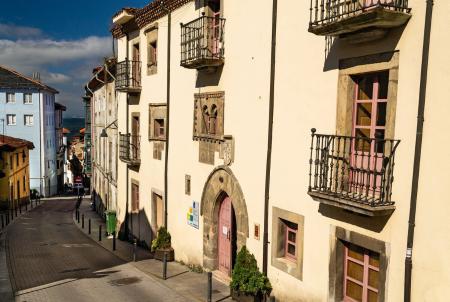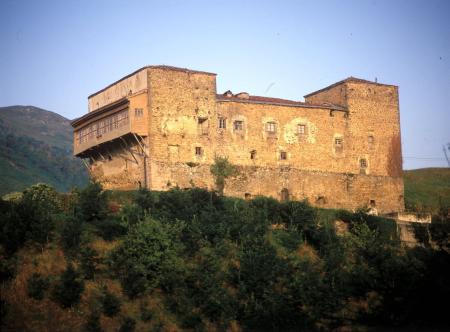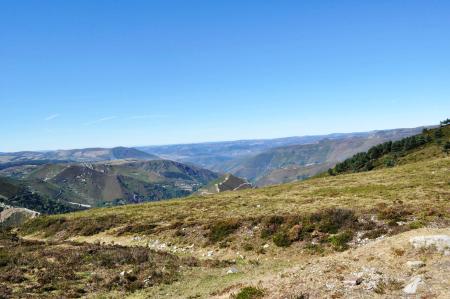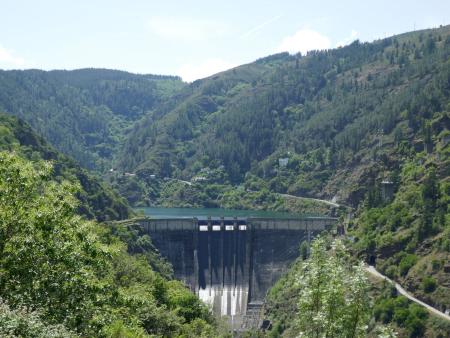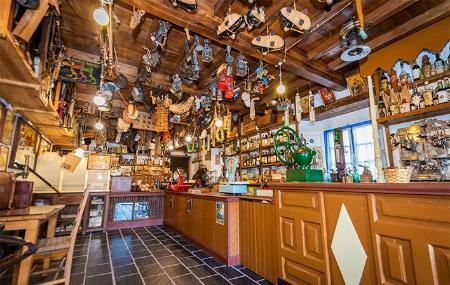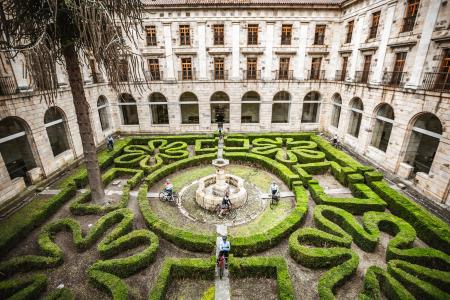Tinéu-Grandas de Salime Primitive Way
- Address Tinéu, Pola de Allande, Grandas de Salime
- Distance Distance: 72 kms
- Difficulty Difficulty: Muy Dura
- Total ascent Total ascent: 1750 m
- Maximum altitude Maximum altitude: 1148 m
- Minimum altitude Minimum altitude: 201 m
- IBP index IBP index: 110
- Route Primitive Way of St. James
- Type of bicycle Type of bicycle: Road
- Type of route Type of route: Linear
- Return by Train Return by Train: No
We start out from the village of Tinéu and climb for about 5.5 km before losing ground again for another 4.5 km. From here onwards we will continue to climb steadily and gently until we pass the Alto de Lavadoira, which, after descending, will take us to Pola de Allande. For the most part, the route passes through pastures, small villages and many scattered settlements, becoming more wooded as we approach La Pola.
The palace of Cienfuegos presides over Pola de Allande, a witness to its medieval past, while the abundant Indian architecture bears witness to the past of its people as a result of their travels overseas.
We continue our journey and immediately tackle the 11 km climb to the Puerto del Palo (1146 m.), the most serious obstacle of this stage. The ascent introduces us to a new, different landscape, where the world of slate and quartzite gains prominence and shows a change in the colour of the stone, in the lack of vegetation at altitude, in the valleys. An extreme example is the descent of the pass, from the Montefurado viewpoint, where you can see the location of the village of the same name as well as a revealing landscape.
We descend the Puerto del Palo, and if we observe with a certain perspicacity we can see abundant remains of Roman gold mining, from dumps and cuttings to old canals to carry water to the mines. It is not in vain that the name of Montefurado was already a sign of the former mining splendour of the area.
We continue our journey, passing through Berducedo, the entrance to Valledor (this will have to be left for another trip), and we arrive at the Salime reservoir dam, a titanic construction for its time, and from where the remains of the industrial installation used for its construction can still be seen on the hillside facing north. All that remains is to climb up to Grandas de Salime, the end of this stage, some 6 km away, without forgetting to stop at one of the viewpoints on the ascent.
Grandas de Salime is the town that was established after the reservoir flooded the village of Salime. In the centre of the village is the Collegiate Church of San Salvador, which marks the Pilgrims' Route to Santiago de Compostela, and nearby is the Ethnographic Museum, one of the most complete and interesting in the whole of Asturias, which is definitely worth a visit.
Respect the direction of traffic on urban stretches.










